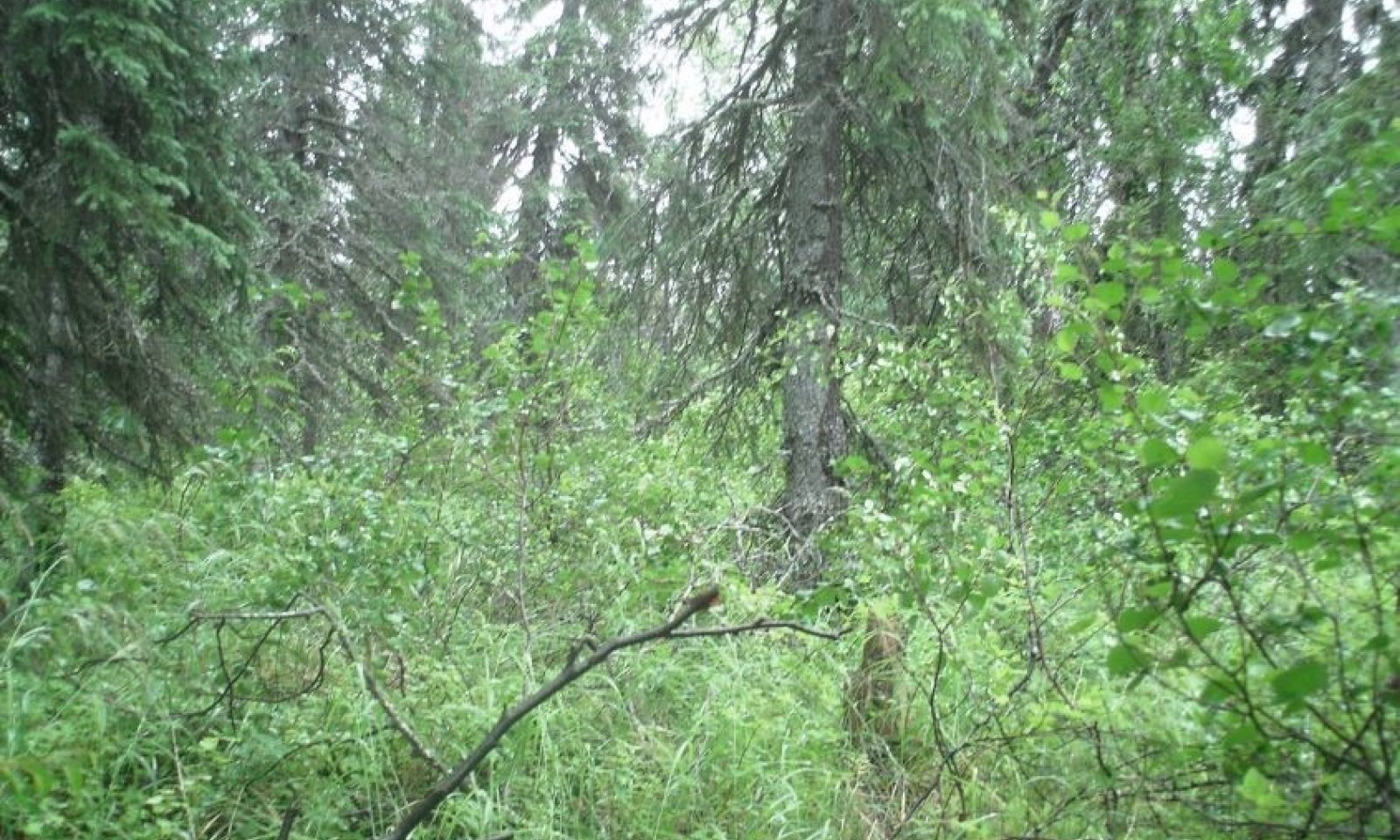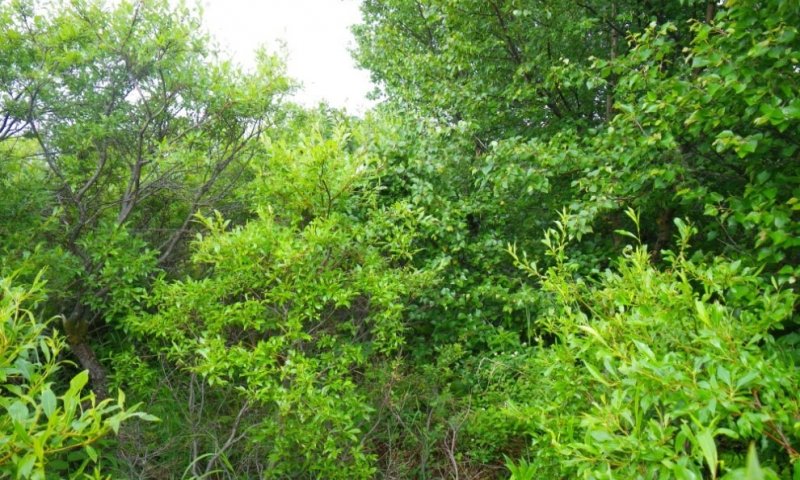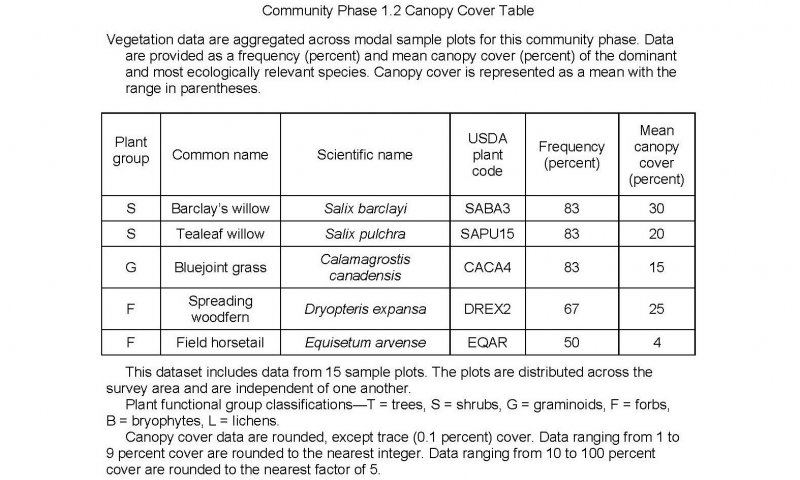

Natural Resources
Conservation Service
Ecological site F236XY116AK
Boreal Forest Loamy Wet Slopes
Last updated: 2/13/2024
Accessed: 12/21/2025
General information
Provisional. A provisional ecological site description has undergone quality control and quality assurance review. It contains a working state and transition model and enough information to identify the ecological site.
MLRA notes
Major Land Resource Area (MLRA): 236X–Bristol Bay-Northern Alaska Peninsula Lowlands
The Bristol Bay-Northern Alaska Peninsula Lowland Major Land Resource Area (MLRA 236) is located in Western Alaska. This MLRA covers approximately 19,500 square miles and is defined by an expanse of nearly level to rolling lowlands, uplands and low to moderate hills bordered by long, mountain footslopes. Major rivers include the Egegik, Mulchatna, Naknek, Nushagak, and Wood River. MLRA 236 is in the zone of discontinuous permafrost. It is primarily in areas with finer textured soils on terraces, rolling uplands and footslopes. This MLRA was glaciated during the early to middle Pleistocene. Moraine and glaciofluvial deposits cover around sixty percent of the MLRA. Alluvium and coastal deposits make up a large portion of the remaining area (Kautz et al., 2012; USDA, 2006).
Climate patterns across this MLRA shift as one moves away from the coast. A maritime climate is prominent along the coast, while continental weather, commonly associated with Interior Alaska, is more influential inland. Across the MLRA, summers are general short and warm while winters are long and cold. Mean annual precipitation is 13 to 50 inches, with increased precipitation at higher elevations and areas away from the coast. Mean annual temperatures is between 30 and 36 degrees F (USDA, 2006).
The Bristol Bay-Northern Alaska Peninsula MLRA is principally undeveloped wilderness. Federally managed land includes parts of the Katmai and Aniakchak National Parks, and the Alaska Peninsula, Becharof, Togiak and Alaska Maritime National Wildlife Refuges. The MLRA is sparsely populated. Principal communities include Dillingham, Naknek, and King Salmon. Commercial fishing in Bristol Bay and the Bering Sea comprises a major part of economic activity in the MLRA. Other land uses include subsistence activities (fishing, hunting, and gathering) and sport hunting and fishing (USDA, 2006).
Ecological site concept
This boreal ecological site is on linear to convex plains slopes. Site elevation is between 40 and 150 feet above sea level. Slopes are nearly level to gentle (0 – 4 percent). Site hydrology and soil development and fertility shape the vegetation on this landform. Ponding is an occasional and brief event. A shallow (17 – 33 inches) water table is present in June, restricting plant species during the important early growing season. While hydrologically influenced, the understory of this site is less restricted by wet soils than other similar sites, like R236XY117AK. Soil development is weak, characterized by an ochric epipedon, but is likely balanced by the presence of volcanic ash deposits that may increase soil fertility.
The reference state supports two communities. The reference plant community is characterized as a mixed open forest (Viereck et al., 1992). It is composed of an open canopy of white spruce and paper birch with an open understory of facultative upland to facultative wetland shrub and herbaceous species. The second community is a closed willow scrubland.
Associated sites
| F236XY117AK |
Boreal Forest Wet Loamy Plain Drainageways Both are forested sites on wet plain soils. F236XY117AK is associated with wetter soils that are somewhat poorly drained and support a shallow water table throughout the growing season. Vegetation is restricted to facultative wet to obligate species in the understory. This site is moderately well drained with a water table in June. While hydrologically influenced, the understory is less restricted by wet soils. |
|---|---|
| F236XY115AK |
Boreal Forest Loamy Moist Slopes Both sites are on plains and hills. F236XY115AK describes similar areas that are not adjacent to wetlands. Wetland hydrology influences the site characteristics, disturbances, and supported vegetation of F236Xy116AK, differentiating it from F236XY115AK. |
Similar sites
| F236XY117AK |
Boreal Forest Wet Loamy Plain Drainageways Both are forested sites on wet plain soils. F236XY117AK is associated with wetter soils that are somewhat poorly drained and support a shallow water table throughout the growing season. Vegetation is restricted to facultative wet to obligate species in the understory. This site is moderately well drained with a water table in June. While hydrologically influenced, the understory is less restricted by wet soils. |
|---|
Table 1. Dominant plant species
| Tree |
(1) Betula papyrifera |
|---|---|
| Shrub |
(1) Spiraea stevenii |
| Herbaceous |
(1) Dryopteris expansa |
Click on box and path labels to scroll to the respective text.
Ecosystem states
State 1 submodel, plant communities
| 1.1a | - | More frequent, longer periods of ponding. |
|---|---|---|
| 1.2a | - | Less frequent, shorter periods of ponding. |



